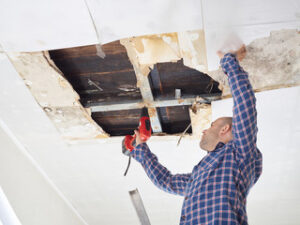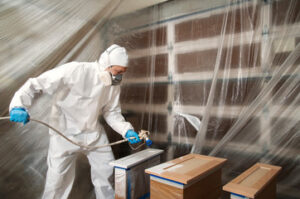Small Parcel Audit saves shippers money by identifying and recovering shipping carrier invoice errors. It also unveils valuable data and insights that can help streamline shipping operations.

Once you’ve negotiated a quality rate with your carrier, it’s time to ensure that they deliver on their promise of accurate invoices. Whether its duplicate charges, service level errors or accessorial mistakes, carrier invoice errors are common. Click Here to learn more.
Address correction fees are a major revenue generator for carriers, and they’re often charged due to a simple mistake or oversight. The good news is that these errors can be corrected quickly and easily with a small parcel audit.
Small parcel audits can identify and recover numerous service failures including but not limited to:
Late deliveries. Getting your package delivered on time is crucial for your business and customers. It’s also a big reason why many businesses use a carrier. Whether it’s an error on the carrier’s end or in your systems, service failures can impact your bottom line and customer satisfaction. Getting these errors corrected with a small parcel audit is essential for your business to remain competitive and profitable.
Service failures like address correction fees, dimensional weight charges that aren’t justified, and residential delivery surcharges for commercial items can be prevented with front-end shipping validation and classification processes. Taking this approach will ensure accurate weighing and dimensioning on every shipment, eliminate costly address correction fees, and provide greater flexibility when it comes to routing options for your packages.
Once you’ve negotiated a great rate with your carrier, it’s important to hold them accountable and make sure they deliver on their promises. Unfortunately, many shipping errors get overlooked or go unnoticed. Whether it’s an error on a dimensional weight calculation, an extra Saturday charge, or misapplied shipping rates, these mistakes can add up to significant losses for your logistics business. A regular small parcel invoice audit can prevent these mistakes and help you get back the money you’ve lost to carrier overcharges and service failures.
If you’re ready to start saving on your shipping costs with a small parcel audit, contact us today for more information on our services and how we can help your business. Our team of experts will work on your behalf to identify and recover eligible refunds. We use a unique, proprietary software that automatically downloads your carrier’s weekly invoice files and performs an in-depth, line by line review to identify overcharges. We only get paid when you get paid.
Discounts
Many businesses choose to ship with certain parcel carriers because they offer cheapest rates and fastest service for specific package types. However, choosing the right carrier isn’t the only way to save on shipping costs. A small parcel audit can help uncover hidden errors and overcharges on invoices that can eat away at profit margins. Using data from parcel shipping audits, companies can recover refunds for incorrect surcharges, verify discounts, and optimize carrier contract terms for savings.
A few errors on a single invoice may not seem like a big deal, but it can add up over time and result in tens of thousands of dollars lost to overcharges and inaccurate charges. Often, these errors are caused by human error. A small parcel audit can spot errors like address correction fees that don’t belong on the invoice, overcharges on dimensional weight pricing, and misapplied shipping rates. Identifying these issues gives your business leverage to negotiate for better contract terms with your carrier.
Moreover, a parcel shipping audit can also verify whether your shipping carrier has applied all the discounts and waivers that are available to you, reducing your total shipping costs. Typically, these discounts are associated with your company’s shipping patterns and shipping zones. Getting these discounts can significantly reduce your shipping costs. In addition, a small parcel freight audit can verify other charges like variable fuel surcharges, special handling charges, and accessorial fees to ensure they’re accurate and in line with the terms you’ve negotiated with your carrier.
As a business, it’s important to have the best possible relationship with your shipping carrier. Performing regular parcel shipping audits helps you build that relationship, and in turn, your carrier is more likely to provide you with faster deliveries and negotiate favorable contract terms for you. In addition, a reliable and efficient parcel auditing service will make sure all your invoices are correct, saving you valuable time.
Managing your shipping expenses isn’t easy, but it’s critical for your business to stay competitive. By identifying errors and securing timely refunds, you can cut your shipping costs by up to 20%. To find out how much you can save, schedule a free small parcel audit with P3.
Dimensional Weight Pricing
Performing a Small Parcel Audit manually is time-consuming, so many companies outsource this process to an external logistics provider. These companies use automation and data analytics to monitor and save shipping costs, including catching extra fees that don’t belong, such as address correction charges or overcharges on dimension weight pricing.
Using a dedicated parcel auditing platform, like AuditShipment, ensures accurate invoices and eliminates extra charges that are costing your company money. By clamping down on dimensional weight pricing errors, as well as erroneous residential delivery charges and incorrect Saturday rates, you can save up to 15% of your total shipping costs.
For shippers that rely on small parcel delivery, a little slip-up can add up to big costs. In addition to putting your budget out of whack, these mistakes can also cause delays in shipping and upset customers. But with Small Parcel Audit, these issues can be easily caught and resolved.
A small parcel audit takes a close look at shipping invoices to catch all kinds of errors, including dimensional weight pricing, erroneous residential delivery surcharges and shipments that were manifested but never shipped. A thorough Small Parcel Audit helps businesses secure the refunds they are owed from carriers and can help them prevent these costly errors from happening in the future.
Dimensional weight pricing errors, caused by insufficient packaging or inaccurate measurements of a package’s length, width and height, can lead to overcharges on a shipment’s invoice. To avoid dimensional weight pricing errors, it’s best to use lightweight, compact packaging that keeps the package as small as possible while still meeting the requirements for safe and efficient transit.
Other common errors that can be spotted through a detailed audit include inconsistencies with freight discounts and incorrectly applied shipping rates. This can be caused by inaccuracies with carrier contracts, misapplication of negotiated discounts or inconsistencies between tariff and non-tariff rates. A small parcel audit catches these errors quickly so that your business only pays for what it should be.
To keep your shipping operations running smoothly and your shipping costs in check, make it a regular practice to review the results of a small parcel audit. This can help you identify savings opportunities and renegotiate your carrier contract or refine your shipping strategy to improve your bottom line.
Misapplied Shipping Rates
A shipping error might seem like no big deal at first, but it can quickly add up and drain your company’s resources. It’s important to catch these errors and get them corrected. This can help your business save money, reduce customer frustration, and improve its bottom line.
One of the most effective strategies for catching shipping errors is conducting a small parcel audit regularly. This process compares rates negotiated with shipping carriers with actual invoices, ensuring that the agreed-to fees are accurately applied to each shipment. It also uncovers additional savings opportunities and helps logistics teams optimize shipping decisions. A fully automated parcel audit system can also be time-saving, allowing businesses to focus on other priority tasks.
Shipping costs can represent 5-10% of a company’s total revenue, making it a major expense that should be monitored carefully. To avoid paying unnecessary charges, it’s crucial to conduct regular small parcel audits to spot errors and overcharges in their earliest stages. These audits can detect issues such as address correction fees, overcharges on dimensional weight pricing, and other errors. With this information, businesses can then take action to get refunds or renegotiate contracts with shipping carriers.
A small parcel audit can be conducted manually by in-house teams or through an outsourcing partner. Outsourcing is often preferred because it frees up in-house resources so they can be used on other projects and strategic initiatives for the company. It also ensures that the audit is being performed accurately and regularly.
A quality small parcel audit service will be able to automatically download invoice files and verify the accuracy of each charge, including spotting errors such as unauthorized surcharges and duplicate charges on an invoice. The best services can also provide a full-transparent database that gives companies visibility into each shipment from origin to destination and all the fees associated with it. This visibility helps companies identify errors such as voids, proof-of-delivery mismatches, zone validation failures, and more. These insights can be used to improve delivery operations, renegotiate carrier contracts, and maximize savings.

